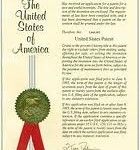By: Dan Pierron
Congratulations! Your claims have been allowed, you’ve paid your issue fee, and you’ve received the seal and red ribbon! It’s been years in coming, and now you can kick back and relax, both your mind and your legal budget. Right? Maybe not. Deciding how to utilize a single patent or an entire portfolio of intellectual assets can suggest vastly different steps to be taken by you, your company, and your legal counsel, not to mention potential infringers. This post is the first in a series for newly minted patentees, giving them an overview of how they might choose to proceed with enforcement of their patent, identifying potential pitfalls, and describing alternative strategies to allow the patentee to make a more informed decision.
A first option is to use a patent portfolio in a defensive manner. This is a strategy most commonly adopted by corporations offering multiple products, often that are very different in their makeup and function. However, to many, this represents an underutilization of the value offered by patents. Indeed, patents grant you a “negative” right – the right to prevent others from making, using, or importing the invention described by your patent. So, if you’re going to enforce your patent, what is the best way to go about it?

Patents – More Than Just Wall Dressing
A first, very common action is to send a “cease and desist” letter. A cease and desist letter, or “C&D,” notifies the recipient that you believe they are engaged in an activity or are making a product the includes all the elements of your patent. Sending a C&D is a very effective way to accomplish a number of things. First, it makes the recipient aware of your patent. This is a requirement for some remedies in a patent suit that will be discussed in a later post. Second, it presents you with the opportunity to initiate licensing negotiations with the recipient. Whether you want a license or not is a strategic decision that must be made before sending the C&D, although other alternatives will be discussed if a license is not in your plan.
Before sending a C& D, it is important to be aware of the risks involved. Most importantly, it does notify the recipient about your patent, at which point they may decide to design around your patent, thus potentially ceasing their allegedly infringing activity. Were they not aware of the patent, they may have continued with the activity, increasing their exposure and, potentially, their liability. Secondly, depending on the wording used in the C&D, the recipient may have cause to seek a Declaratory Judgment, which is essentially asking a court to decide whether the patent(s) included in the C&D are valid. There are a number of strategic implications resulting from this that will be discussed in a later post in this series.

Getting Served on the Internet: Usually Done by Cats
An alternative to sending a C&D is filing suit in Federal Court. The only remedies for patent infringement are in the federal court system. Filing suit conveys a very strong message, that you seriously believe the target of the suit infringes your patent, and that you are willing to litigate the matter. However, such a strong move can have negative consequences. Someone who has been served with a lawsuit might feel threatened to the point that they become less willing to negotiate a license. Moreover, a significant risk of any patent suit is the risk of having your patent invalidated by the court. Indeed, much as with choosing a C&D, there are many strategic ramifications in filing a suit as your opening salvo.
A third option is to file suit, but not serve the defendant with the suit. In many jurisdictions, the plaintiff may wait up to thirty days before serving their complaint on the defendant. This tactic offers a middle ground between the two options described above. First, it is a rather significant show of strength and commitment of the plaintiff’s willingness to enforce their patent rights. Second, it might not provoke as strong a reaction on the part of the defendant, as the suit is not active until the defendant has been served. Moreover, this tactic also imposes a rather firm time frame on any settlement negotiations.
Each of the above strategies offers a number of strategic advantages and disadvantages that will be discussed in coming posts. Until then, consider your own preference for adversity, what your desired outcomes are, and what reputation you want to make for yourself when deciding on a course of enforcement.
If you would like to learn more about the patent process, please follow me on Facebook and Twitter, and connect with me on LinkedIn.


